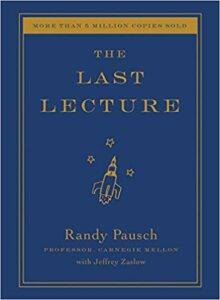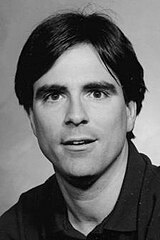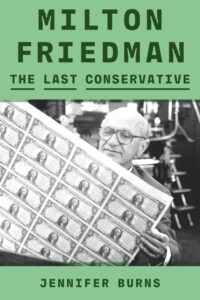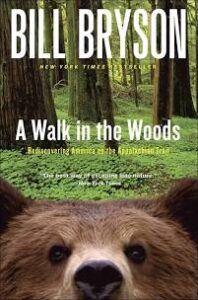Elon Musk

By Walter Isaacson
688 pages
Published Sept. 12, 2023
This was my book club’s selection for January. I was glad it was selected because I was going to read it anyway.
When Musk claimed the coveted title of “richest man in the world” at $200 billion, I wondered if he could hold onto that spot with the likes of Jeff Bezos and Mark Zuckerberg moving up behind him. The next year, Bezos broke Musk’s historic record with an estimated net worth of $240 billion, but by that time Musk had broken through the $300 billion barrier. And today, the top five are, Bernard Arnault (LVMH) at $184 billion, Larry Ellison (Oracle) at $210 billion, Zuckerberg (Meta) at $240 billion, Bezos (Amazon) at $250 billion, and Musk still very dominant at $415 billion.
So, that’s one reason I wanted to read the book: to know more about wealth accumulation at those heights.
Another was the astonishing fact that Musk has done so much more than Tesla. Look at any of the top 20 richest people and, aside from Musk, you’ll find that they all made their fortunes by sticking to one thing.
A third reason was his supposed overspending to buy Twitter and transform it into a more diverse and less-censored social media platform. (Which he has done.)
And, of course, there was his recent move into politics as Trump’s chief of slashing government spending.
What kind of man is he? Or is he, as some have suggested, an Alien?
What I Liked About It
* Musk’s story. Before reading Isaacson’s book, I knew only what most people knew about Musk – i.e., that after making his first little fortune on PayPal, he went on to buy Tesla and lead the company in building the first (and still the only) high-performance, reliable, and cost-efficient electric car. I also knew that he had some sort of rocket company that was supposedly competing with NASA. And that more recently he had engineered a hostile takeover of Twitter. But his story, as told by Isaacson, is much more impressive than even that. I don’t feel I’m exaggerating by saying that Elon Musk had contributed more to America (and really the world) at 53 years of age than any other American since Benjamin Franklin.
* Insights into his personality: The book is chock full of valuable insights into Musk’s nature, and how his upbringing and his Asperger’s affected his success.
* Business and wealth-building ideas: It is absolutely jam-packed with good and very good ideas about entrepreneurship and business management – many of which I’ve been thinking and writing about for more than 20 years.
What I Didn’t Like
At first, I was disappointed in Isaacson’s prose style. I suppose I was looking for something literary since he has such a good reputation as a writer. And to be sure, his style is not literary at all. It’s more reportage. And almost stenographic reportage at that. But this reservation faded as I lost myself in the story and in the ideas that came to me on almost every page.
Interesting
The book is rich with intriguing and fascinating facts about Musk, his approach to business, and his motivations. Isaacson also offers many examples of how his career impacted the lives of hundreds of millions of people – hell, the entire planet – in ways I never knew.
A few of the anecdotes that were most interesting to me…
* Musk got himself caught up in the Russia-Ukraine war after he provided the Ukrainians with thousands of land-based communication systems hooked to Starlink. However, when he found out that Ukraine intended to use his satellites to launch an offensive against Russian assets in Crimea, he cut off the Starlink connection in that area. In the months that followed, he negotiated with top generals on both sides but refused to move away from his position of aiding the Ukrainian people but not the military in its advances against Russia.
* He was originally a Democrat and supported Obama, but that started to change when he saw how the Dems were using censorship against him from 2016 to 2020. He was also, at the time, becoming chummy with Libertarians like Joe Rogan and Dana White and with Libertarian thinking. And then, when more info came out about the Biden administration’s involvement in interfering with the democratic process as the 2024 election approached, he began to change his mind about Trump.
* Musk liked Twitter because it was like a digital game in which acting impulsively and battling one’s opponents was just plain fun. He was also impressed by its reach. So he began quietly buying shares. As he became more aware of Twitter’s biases, some of his Libertarian friends suggested that he should buy Twitter itself. And he did.
Critical Reception
Reviews of Isaacson’s biography have been mixed. Some critics recommended it strongly, as I’ve been doing since I finished reading it:
* “With Elon Musk, Walter Isaacson offers both an engaging chronicle of his subject’s busy life so far and some compelling answers.” – Wall Street Journal
* “Whatever you think of Mr. Musk, he is a man worth understanding – which makes this a book worth reading.” – The Economist
* “The book is bursting with stories…. A deeply engrossing tale of a spectacular American innovator.” – New York Journal of Books
* “[Isaacson’s] portrait of the tech maverick is fascinating.” – The Telegraph
On the other hand, it was almost universally dissed by the leftist media:
* New York Times critic Jennifer Salai wrote, “Isaacson… is a patient chronicler of obsession; in the case of Musk, he can occasionally seem too patient.”
* Brian Merchant of the Los Angeles Times criticized the format as extremely dated and took issue with Isaacson’s persistent framing of Musk as a “moody but brilliant world-mover.”
* In The Guardian, Gary Shteyngart called the book a “dull, insight-free doorstop.”
My Rating
* Horizontality: 3.3
* Verticality: 2.8
* Stickiness: 3.5
* Literary Richness: 2.8
* Average Score: 3.0
* Bonus Points: 0.8 (for becoming a huge fan of Musk, thanks to this biography)
* Overall Total: 3.8 out of 4.0
About My Rating System
Last month, I introduced you to the system I use for the books and films I review here. To remind you…
My Rating System for Most Books/Films
* Horizontality: How much and how well did the book/film provide a sense of a particular place, time, community, and/or culture?
* Verticality: How deeply did the book/film go in mining the depths of the human experience?
* Stickiness: How tightly did the book/film keep me glued to the story?
* Literary/Visual Richness: How well did the written descriptions/cinematography enhance the story?
And sometimes, as you can see in my review of Elon Musk above, I add bonus points for something I felt was especially good.
The Reivers: A Reminiscence
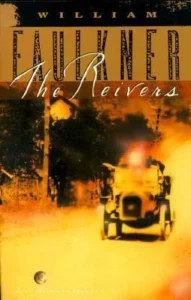
By William Faulkner
320 pages
First published Jan. 1962
The Reivers was my book club’s February selection.
I suppose that, after a vigorous discussion of the world’s richest man at our last meeting (see my review of Musk, above), the Grand Poobahs that secretly run the Mules must have felt that we members needed to separate ourselves from the current, tempestuous reality by moving to fiction and going back in time.
For my part, as a graduate student in literature, I was always embarrassed by the fact that I could never get into Faulkner, even though I tried. I found his prose style – both in terms of the phrasing and the diction – challenging. I had trouble following the action. Now I know that it was some combination of dyslexia and ADD. And so, in anticipation of running into that problem again, I opted to listen to The Reivers as an audiobook, and that turned out to be a good idea.
I can now say that I’ve read (okay, listened to) a Faulkner novel from cover to cover.
The Plot
The Reivers is a picaresque novel that tells of three unlikely car thieves from rural Mississippi. Eleven-year-old Lucius Priest is persuaded by Boon Hogganbeck, one of his family’s retainers, to steal his grandfather’s car and make a trip to Memphis. The Priests’ coachman, Ned McCaslin, stows away, and the three of them are off on a heroic odyssey, for which they are all ill-equipped, that ends at Miss Reba’s bordello in Memphis. From there a series of wild misadventures ensues – involving horse smuggling, trainmen, sheriffs’ deputies, and jail. (Source: Goodreads)
What I Liked About It
* I liked the story. It is engaging and even uplifting.
* I liked the dialogue, too. Colorful and authentic in a folksy Mark Twain sort of way.
* The principal characters are likeable but not simple. They have full-spectrum personalities, even though there is almost always some aspect of each of their personalities that is exaggerated.
* Faulkner depicted in detail a world I was only vaguely familiar with, and made it come alive. And despite the book’s generally nostalgic sentiment, he did not shy away from depicting all that was troublesome about that world.
* Unlike some of his earlier novels, the narration here is straightforward. Gone are the fancy literary techniques you’ll find in Faulkner’s most highly praised books.
What I Didn’t Like
As much fun as it was to read, the book didn’t change me. It didn’t give me a deeper understanding, or even a different perspective, on the core subject matter – the quotidian experience of life for Blacks and Whites at that time. It touched on many of the same themes presented in Huck Finn, for example, but I didn’t have any Aha! moments or thoughts of “that’s so true.”
Interesting
The Reivers is technically a comic novel, and as such may seem uncharacteristically lighthearted given its subject matter. For these reasons, it is often ignored by Faulkner scholars or dismissed as a lesser work.
About the Author

William Faulkner, arguably one of the greatest writers of the 20th century, was born in New Albany, Mississippi, on Sept. 25, 1897. He published his first book, The Marble Faun, in 1924, but it is as a literary chronicler of life in the Deep South – particularly in fictional Yoknapatawpha County, the setting for several of his novels – that he is most highly regarded. In such novels as The Sound and the Fury, As I Lay Dying, Light in August, and Absalom, Absalom!, he explored the full range of post–Civil War Southern life, focusing both on the personal histories of his characters and on the moral uncertainties of an increasingly dissolute society. In combining the use of symbolism with a stream-of-consciousness technique, he created a new approach to fiction writing.
He was awarded the 1949 Nobel Prize in Literature for “his powerful and unique contribution to the modern American novel.” Two of his works, A Fable (1954) and The Reivers (1962), won the Pulitzer Prize for Fiction.
My Rating
* Horizontality: 3.7
* Verticality:3.7
* Stickiness: 3.4
* Literary Richness: 3.8
* Average Score: 3.6 out of 4.0
Poor Charlie’s Almanac:
The Wit and Wisdom of
Charles T. Munger

Edited by Peter D. Kaufman
512 pages
Originally published in 2008
Poor Charlie’s Almanack is a collection of Charlie Munger’s best advice given between 1986 and 2007 in the form of commencement addresses and roundtable talks. It covers a wide range of topics, including decision-making, investing, and how to live a good life.
I came across a review of this book that spurred me to read a summary of it, which then spurred me to buy a copy. I haven’t yet finished reading it, but I feel that I’ve already gotten enough out of it that my money was well spent.
What I’m Liking About It
Munger has an impressive, almost encyclopedic knowledge of business, finance, history, philosophy, physics, ethics, etc. He uses that wisdom to curate the dozens of smart and practical pieces of advice and strategies he provides along the way. A few examples:
* Munger’s “Multiple Mental Models” approach to decision making is as good as it is simple. And much of it is contrarian to common thinking about investing, which makes the reading feel that much more exciting.
* His “Lollapalooza Effect” idea, which explains the confluence of multiple biases on a conscious and unconscious level and how to recognize and avoid them.
What I’m not Liking So Much
The structure of the book is a bit confusing. I would have preferred to see the ideas listed in some orderly way, and maybe, as one critic suggested, “with pictures given alongside – in line with Munger’s idea to ‘make the mind reach out to the idea’ thereby increasing the idea’s retentiveness in memory.”
Interesting
Poor Charlie’s Almanack is considered to be something of a publishing miracle – never advertised, yet selling thousands of copies every year.
About the Author

Charles T. Munger (1924–2023) was an investor, businessman, and former real estate attorney. He was the vice-chairman of Berkshire Hathaway, the multinational conglomerate controlled by Warren Buffett. He was chairman of Wesco Financial Corporation from 1984 to 2011. He was also chairman of the Daily Journal Corporation and a director of Costco Wholesale Corporation.
Critical Reception
Reviews of Poor Charlie’s Almanack over the years have been generally very positive.
* “With 512 pages, there is something for everyone, and Poor Charlie’s Almanack is an impressive and thorough tribute to one of the brightest, most pragmatic, and iconoclastic investment minds ever.” – The Motley Fool
* “Those who know only a little about him think Munger was a paragon of how to pick stocks – which he was. But those who knew him well consider him a moral exemplar – someone who showed how to think clearly, deal fairly, and live fully. He took nothing for granted.” – Jason Zweig, The Wall Street Journal
“As instructive as Munger’s advice – which affords peeks into how he and Buffett made their implausibly profitable investment decisions – is his unapologetic skewering of the sacred principles of contemporary investing and business education, and of the behavior of the business community generally…. Munger’s painfully honest and occasionally indecorous views on the mainstream investing world make for entertaining reading.” – Dave Mandle, The Los Angeles Review of Books
My Rating
* Horizontality: 3.5
* Verticality: 3.3
* Stickiness: 3.6
* Literary Richness: 3.2
* Average Score: 3.4 out of 4.0
Ganbatte!:
The Japanese Art of
Always Moving Forward

By Albert Liebermann
164 pages
Published Oct. 12, 2021
I think this was a gift to me by one of my Japanese colleagues. Either that or I picked it up at the airport in Tokyo on the way back from my last trip. If I did pick it up at the airport, it was because of its size (only 164 pages) and because the cover (see above) seemed unprepossessing. I would have thought it was the sort of book I could read on the flight home.
But I didn’t read it on the plane. Instead, I spent the 14 hours I was in the air plotting a strategy for a half-dozen business ideas that will probably never see the light of day.
Never mind. I read the entire thing yesterday, in the late afternoon, sitting outside our home in Nicaragua. It took me about three hours to grok it, reading the way I always read how-to and how-it-works books – i.e., super quickly. Not that I miss anything. Books like these often have useful observations or perspectives to offer. But they are generally few and far between. And in between the prose is prosaic.
I knew that Ganbatte! wasn’t going to be a heavy read, and I feared it was going to be vacuous. It wasn’t. The ideas it presented were simple, but hardly simplistic – ideas like these:
* Separating “difficult” from “impossible”
* Making use of failure
* Cultivating patience
* Working mindfully with a sense of awareness
* Continually improving
* Pushing through a crisis
One could say that the Japanese concept of ganbatte is drearily simple: “Do your best!” But as Liebermann explains, it’s more than that – deeper and broader. It’s a choice of how to live one’s life that includes earnestness and effort, to be sure, but also the belief that one’s character and one’s value in life is much more than intention. It is how you perform the quotidian tasks when no one is watching.
What I Liked About It
There were a half-dozen passages in the book that got me thinking days after I finished it, which is always a good thing. For the sake of your time, I’ll mention only one of them.
About halfway through the book, Liebermann writes about inspiration – having that unique experience when an exciting new thought or perception lights up your imagination and illuminates a worthy path to follow.
It reminded me that whenever I give a speech, I am almost always asked by someone in the audience something like “How do you get your inspiration? How do you get your new ideas about business?” (It came up, ironically enough, the last time I gave a speech in Tokyo.) And I never know what to say.
Liebermann gave me my answer to that question – the answer I had never been able to articulate – in a quote often attributed to Pablo Picasso:
“Inspiration does not come when you are sitting around waiting for it; It comes when you are working.”
That has been my experience. I get my best ideas when I am working – or at least during a time when I’ve spent days working hard on solving a problem or finding some new approach.
What I especially like about that statement is that it debunks the very wrong idea that inspiration is something one must wait for. As if it is a gift from the gods that is rarely given. A happenstance that comes out of nowhere. A blessing that comes only when one is patient.
If you are waiting, you are not thinking. You are in a state of mindless relaxation. Simply put, waiting is a state of consciousness that is antithetical to breakthrough ideas. Those wonderful ideas that suddenly chart a path forward may happen at a moment of rest, but they are rooted in vexation – long and frustrating hours of vexation. That is a fact of nature. Believe it or not.
When you get an idea while you are working, you have the unique opportunity to jump on it immediately – to start doing something to get it in motion before inertia sets in. But if it comes to you when, say, you are sunning on the beach or having a good meal with your friends, there is a very good chance that it will be gone by the next morning. Never to return.
So that was one gem of an idea that I got from reading Ganbatte! It’s an idea that helped me write this review and may very well grow into an essay or even a book. Who knows?!
What I Didn’t Like
The book is light on facts and examples. Plus, the assertions made are not backed up. But the more time I spent researching the concept of ganbatte and thinking about it, the happier I was that I was reading it.
About the Author

Albert Liebermann is a writer and philosopher. He studied art and literature in Europe before moving to Japan, where he decided to put his musings on creativity and personal development down on paper.
Critical Reception
* “In this enjoyable debut, philosopher Liebermann explores the Japanese principle of ganbatte (translated as ‘do your best and don’t give up’)…. Readers who enjoyed Hector Garcia’s Ikigai for its focus on finding meaning in everyday life will appreciate this comforting take on how to address life’s inevitable failures.” – Publishers Weekly
* “Ganbatte! breaks down the secret sauce to being happy…. From a student, office worker, driver, CEO, teacher, lumberjack, barista, or whatever, it’ll give you some manner of food for thought as to how to improve your mindset.” – Daddy Mojo blog
My Rating
* Horizontality: 2.0
* Verticality: 3.0
* Depth of Thinking: 2.5
* Literary Richness: 2.5
* Average Score: 2.5 out of 4.0
* Bonus Points: 0.5 (for the half-dozen gems that got me thinking)
* Overall Total: 3.0 out of 4.0






